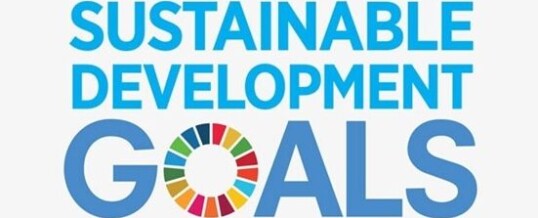
McLeod Group blog by Lauchlan T. Munro, November 30, 2023
Halfway to the Sustainable Development Goals’ (SDGs) target date of 2030, the UN’s recent assessment of the world’s progress is pessimistic: “the climate crisis, the war in Ukraine, a weak global economy, and the lingering effects of… COVID-19… have… hindered progress towards the Goals… (T)he world’s poorest and most vulnerable… are experiencing the worst effects of these unprecedented global challenges”. While those factors have undoubtedly had important effects, the UN assessment overlooks one sad fact, however. The most important players never really took the SDGs seriously.
I know this because I have spent the last few years reading hundreds of national development plans. Most countries (143 by my count), representing three quarters of the world’s population, have published a national development plan since the SDGs were adopted unanimously by the UN General Assembly in 2015. These 143 countries include rich, so-called “developed” countries (though not Canada), middle-income countries, and low-income countries, from all continents and regions of the world.
Governments generally consider the national development plan to be their most important statement of national development policy; all other policies are supposed to align with it. Most governments are now investing considerable technical and financial resources into planning and implementation. The return of national development planning is “not the result of any grand international initiative pushed by donor countries, the international financial institutions or the UN”, but the conscious choice of governments around the world seeking to better manage their country’s development.
It is thus worth asking what these plans say about the SDGs and how central a role the SDGs play in governments’ most important policy document.
In a recent article, I report the results of my content analysis of 170 national development plans published by 143 UN member states and self-governing territories (e.g., Somaliland, Taiwan) between 2016 and 2021. The headline finding is clear: only about half of these national development plans really take the SDGs seriously.
About 40% of plans mention the SDGs and the UN’s Agenda 2030 (i.e., the accompanying General Assembly resolution) less than once every ten pages on average, indicating that the SDGs are not a topic of great interest for those governments. Nor do the SDGs feature prominently in the plans. My research assistants and I examined key parts of every plan to see if the SDGs were discussed – or even mentioned – in the title, executive summary, introduction, foreword or preface by political leaders, description of objectives or priorities, and the monitoring and evaluation section. Half of plans mentioned the SDGs or Agenda 2030 in no more than two of these six places. No plan includes the terms SDGs or Agenda 2030 in its title.
Overall, I developed five measures of how central the SDGs and Agenda 2030 are to these plans. All showed the same result: only about half of the plans are designed around implementing the SDGs. The other plans paid the SDGs lip service at best.
The next thing was then to see which countries were the most enthusiastic about the SDGs and which ones were the least. Again, the results are pretty clear. Rich, high-income countries in Europe and smaller, aid-dependent countries put the most emphasis on the SDGs. The former have long been the strongest proponents of the SDGs and the latter are dependent on the former for financial and other aid.
The plans from middle-income countries and authoritarian petrostates show the least interest in the SDGs. Such countries do not rely heavily on Western aid or finance and usually have strong states capable of defining and pursuing their own agendas. The plans from the large middle-income countries in the G20, Argentina, Brazil (under Jair Bolsonaro), China, India, Saudi Arabia and Turkey, show the least interest in SDGs. Plans from Algeria, Russia and Saudi Arabia do not mention the SDGs even once, nor the core SDG themes of poverty, gender and inequality.
Admittedly, some caveats are in order. South Africa, for instance, has an SDG-friendly plan that barely mentions the SDGs. Nationalist and independent-minded regimes like South Africa’s may be sympathetic to the SDGs but dress them up as a homegrown development agenda for internal political reasons. Still, such cases are a small minority.
Most worrying of all, however, is how about a tenth of recent national plans promote a development agenda that is diametrically opposed to the letter and spirit of Agenda 2030 and the SDGs. Their plans have as their central focus issues like national security, industrialization even at the expense of the environment, and the promotion of authoritarian and patriarchal values. I have elsewhere labelled these countries as the “development dissidents”. They include important countries such as Russia and Saudi Arabia.
So, if the world has not made enough progress towards the SDGs, the reasons may not lie just in a stalled world economy, the war in Ukraine and the lingering effects of the pandemic. The big issue is political. The SDGs are a contested policy agenda that many governments – including governments of large and important countries – simply do not embrace with any enthusiasm. It is easy for a country to vote “Yes” at the UN while quietly resolving to do “No”, especially if you suspect lots of other countries will do the same and accountability for your actions will be long delayed.
When he worked for the UN, Lauchlan T. Munro sat on the inter-agency committee coordinating UN action on the Millennium Development Goals. He now teaches at the University of Ottawa. Image: United Nations.
